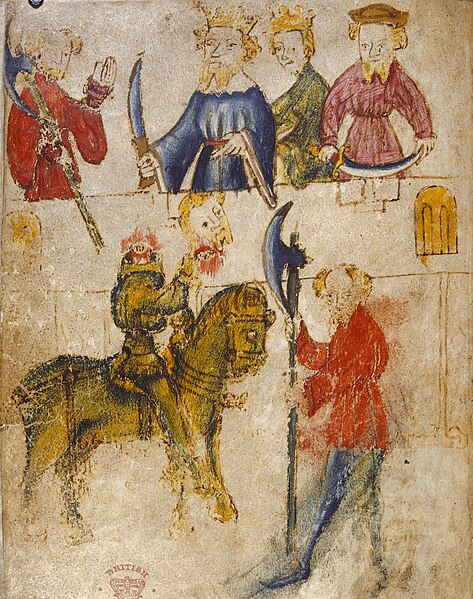Impression of depth in The Lord of the Rings
The impression of depth in The Lord of the Rings is an aesthetic effect deliberately sought by its author, J. R. R. Tolkien. It was intended to give the reader the feeling that the work had "deep roots in the past", and hence that it was attractively authentic.
Tolkien admired the impression of depth in Sir Gawain and the Green Knight. Illustration from the medieval manuscript
Apparent contradiction: Tolkien stated that Elves rode without saddle or harness of any kind, but gives Glorfindel's horse both bit and bridle (modern bit and bridle shown).
J. R. R. Tolkien was attracted to medieval literature, and made use of it in his writings, both in his poetry, which contained numerous pastiches of medieval verse, and in his Middle-earth novels where he embodied a wide range of medieval concepts.
Tolkien enjoyed medieval works like Fastitocalon, and often imitated them in his poetry, in this case in a poem of the same name. French manuscript, c. 1270
Of all medieval cultures, Tolkien was most familiar with that of the Anglo-Saxons. 11th-century illustration of a king and his council.
Tolkien stated that the styles of the Bayeux Tapestry fitted the Rohirrim "well enough".
Tolkien likely based his Balrog fire-demons on his professional study of the Old English word Sigelwara.






